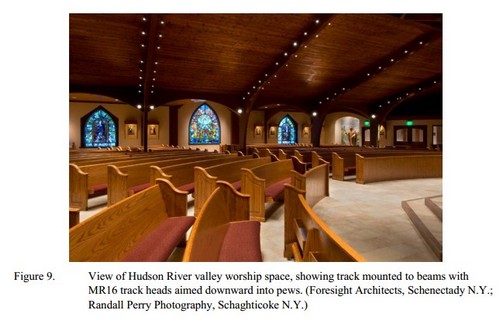DOE has published a new report, Dimming LEDs with Phase-Cut Dimmers: The Specifier's Process for Maximizing Success. The report was created in response to issues raised about dimming by energy efficiency organizations and specifiers, and is based on experience from CALiPER testing and GATEWAY demonstrations.
 |
|
Hudson River valley worhip space is used as a dimmable LED light case study in the report. (LEDinside/ DOE) |
While progress has been made in the dimming capabilities of LED luminaires with carefully matched dimming systems, challenges remain with compatibility and performance of LED replacement lamps and dedicated LED luminaires on existing phase-cut dimming systems, which dominate the installed base of dimmers. The new report reviews how phase-cut dimmers work, how LEDs differ from the incandescent lamps these dimmers were originally designed to control, and how those differences can lead to complications when attempting to dim LEDs. Such complications are often due to incompatibility between the LED source and the dimmer, rather than to any shortcomings in the LED source itself.
The report provides both general guidance and step-by-step procedures for designing phase-controlled LED dimming on both new and existing projects, as well as real-world examples of how to use those procedures. The general guidance aims to reduce the chance of experiencing compatibility-related problems and, if possible, ensure good dimming performance.
Specifiers should also consider alternatives to phase-control dimming for LED sources, such as digital addressable lighting interface (DALI) or even wireless approaches. While they, too, have their pluses and minuses and typically cost more, separating the control signal from the AC mains voltage may result in higher levels of performance, more predictability, and fewer headaches.
Download a PDF copy of the report.












